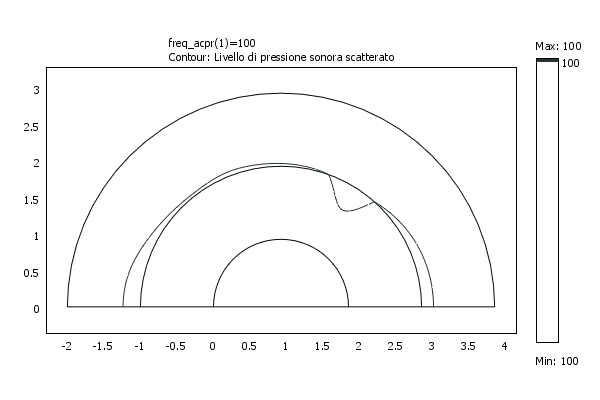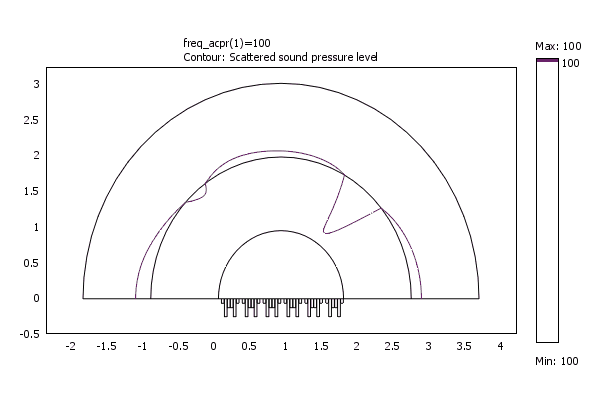Tesi master theses
Devoto fabrication partner
CNC: real experiences | case studies
Acoustics projects | form | analisys
Custom Families Revit
Data Production model to data
Visual Basic scripting for Revit
Barrisol project for a conferece hall
In order to better study component's acoustics, i've got the chance to get and use COMSOL Multiphysics. It will be indeed possible me to make extremely accurate FEM analisys with this powerful software. Therefore I would like to thank COMSOL Group for this opportunity and for their support. Thus, the aim of this post is to declare all the issues i've got about acoustic behaviour of my component: form/acoustics interaction are the core of this project. I will make FEM tests in order to solve these doubts. I'll test a component designed to work on 400/4000Hz range.


First of all, a couple of images from the very beginning test.
In mouvees, 100 dB Isocurve for Scattered sound pressure level over different frequencies (100 to 1000 Hertz), in case of Reflecting (plane wall- upper image) and Diffusing component (rpg profile- lower one) for an impulse given by a point source -power 10e-1 W/m- , whose position is orthogonal and simmetrical to the test surface. We clearly see the diffusing effect of schroeder's profile.
I still have to find a method to evaluate how much diffusion is working good.
1_SCALE-related issues
First issues concern scale: i need to understand which are my dimensional contraints. I remember that design is supposed to work on 400-4000Hz (wavelenghts: 86-8.6cm).

S1_LENGHT: I need at first to understand which is my constraint on the lenght, that is how many schroeder modules (1 module = 30.8 cm) shall i need to make my component be "seen" by wave fronts? does it exist and which is the lenght for which my component standing alone in an ambient stop to be diffracting only?
S2_HEIGHT: since profiles in picture diffuse sound in the orizontal semi-disc only (2d), does Height h inluence diffusive proprieties of my component and how?
S3_FIELD: is distance listener-component important for sound perception mechanism? Does it exist a distance above or under which the effects of my component start to be significative?
S4_EFFICIENCY: does it exist a relationship between component's size and diffuse-field size?
2_GEOMETRY-related issues
This second category of issues regard some operations to do on RPG geometry, whose results i can't find on literature: i need to know which are geometrical (form/acoustics) possibilities for my design. Understanding how RPG geometry enhances acoustic performances is the core of this project: therefore i would like to test some experimental operation. At present i do not know which is the acoustic behaviour of these situations.
.jpg)
G1_PLAN CURVATURE: It is my personal opinion that connecting a number of rpg modules (one period for each module) in order not to form just one diffusive plane will ramdomize first reflections far more.
G2_SIMMETRY: do a couple of RPG module enhance their diffusive power wheter they are coupled aligned or simmetrical?
G3_ELEVATION CURVATURE: what happen if schroeder profiles are not exruded only, but sweeped on a curve? in this case, the semidisc orientation would vary line by line?
G4_WELL'S DEFINITION: shall rpg well top and bottom be closed? What if their profile is open -and consequently irregular-?
commenti
MarcoMondello
5 Luglio, 2009 - 21:22
Collegamento permanente
Acoustic tests: strategies
In order to evaluate how much my component does (or does not) work, it will be necessary to make tests.
I've therefore identified three kind of test: now it's time to choose which one (ones) is the best, in order to start the evaluation.
I would like to thank both eng. S.DiRosario and Prof. A.Farina who have given their opinion on the project.
marco.mondello@gmail.com